When to dig up and how to store radishes (black, green, or margelan)
Radish is not only a tasty and savory product, but also a storehouse of vitamins, mineral salts and trace elements. The product is extremely useful in winter and spring, when many people are deficient in vitamins and immunity decreases. Especially useful is the radish that is grown by hand without the use of various chemicals and growth stimulants. But it is necessary not only to grow it, but also to preserve it, so that for many months it will please with its taste.
Next, we will consider when to remove the radish from the garden for storage, how to properly harvest and store it in winter.
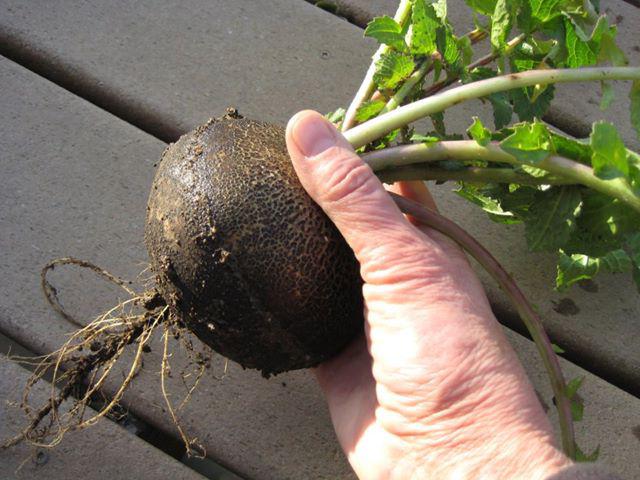
Content
What varieties of radish are suitable for storage
The variety plays an important role in the shelf life of the radish.Summer varieties (early ripening) are not suitable for long-term storage, but winter radish varieties (mid-ripening and late-ripening), which need to be harvested in autumn, can be stored for a long time, but it is important to observe optimal storage conditions.
Most often, gardeners and summer residents grow black radish (the mid-ripening variety is "Winter round black", and the late-ripening "Gaivoronskaya", "Skvirskaya black") and Margelanskaya, also called green and Chinese (only the mid-season variety can be stored).
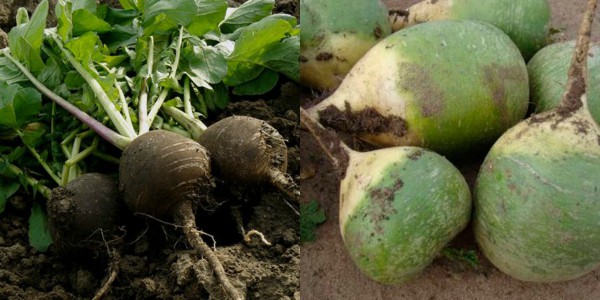
When to dig up radishes for storage
It is optimal to harvest before the first frost, and you should also ensure that the roots do not overripe. As a rule, in the middle lane (Moscow region), winter radish is harvested in late October and early November. In Siberia and the Urals, it is necessary to focus on weather conditions (as, indeed, in any region!).
Note! The product must not be allowed to freeze, otherwise it will be unsuitable for storage.
Mid-season Margelan (green) radish, as a rule, is dug up for storage in the fall at the beginning of October. Mid-ripening varieties of black radish are most often harvested in mid-October, and late-ripening, that is, winter varieties, before the first frost.
Important! When choosing the timing of the harvest, pay attention also to the information about the ripening time of the fruits, which is indicated on the package with the seeds.
How to properly dig up a radish
Correct harvesting plays a critical role in the successful storage of a vegetable.It is necessary to harvest Margelan, black and any other radish for the winter according to the following scheme:
- it is necessary to make a neat digging of the root crop with a pitchfork;
- then you should also carefully pull the radish out by the tops;
- after that, the leaves are cut at a distance of two centimeters from the vegetable itself.
Important! Harvesting should be done in dry weather.
After the radish has been harvested, you should dry the vegetables, otherwise they will become moldy very quickly during storage. To do this, place the root vegetables in a dry place out of direct sunlight. A place under a canopy is ideal. After drying, you should sort out the vegetables.
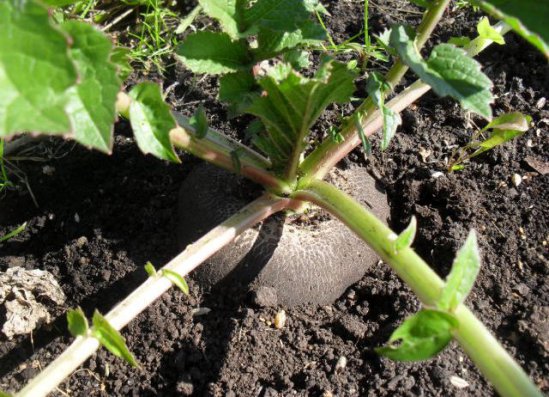
How and where to store radish
If you follow all the optimal storage conditions, periodically check the vegetable, then you can successfully store the radish for up to 9 months. Below you will find information on how and where you can store black, margelan and any other radish.
What vegetables cannot be stored
Before storing, the roots must be sorted out again and carefully examined. Vegetables with the following signs should be discarded:
- with freezing;
- with damage;
- small sizes;
- lethargic;
- root vegetables with dents;
- cracked;
- with rot;
- sprouted;
- wormy;
- very large dimensions.
Vegetables with such parameters cannot be stored, so you can peel and cut off substandard parts of the product and use it immediately or leave it in the refrigerator for a short time. Only healthy, whole and strong root vegetables can be stored.
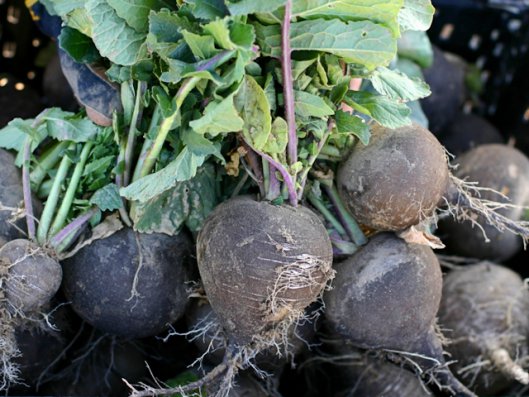
Where to store
There are several convenient options for storing vegetables, each gardener will probably be able to choose the most optimal way for himself:
In a cellar or basement
Before storing vegetables, you need to prepare the basement. Preparation includes the following activities:
- First of all, it is necessary to check the room for the presence of cracks, holes, which can become a convenient entrance for rodents and other pests. It is recommended to eliminate the detected cracks and holes, and insert gratings into the ventilation holes.
- You also need to check for mold, mildew. If their presence is obvious, then it is advisable to disinfect the room, otherwise the crop may become unusable.
- After that, the room must be dried and ventilated.
- Pour dry and clean river sand on the basement floor, its layer should be about three centimeters.
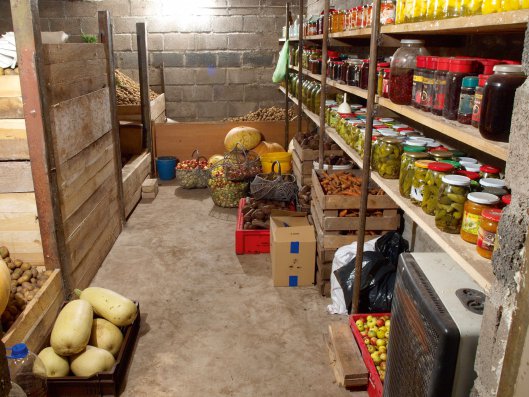
In order for root crops to be stored for a long time and not lose their taste and useful properties, it is required that in the cellar or basement optimal storage conditions:
- the room must be ventilated, so you should take care of ventilation;
- the optimal temperature is from +1 to +2 degrees;
- a suitable humidity level is about 85%, but not more;
- dampness should be excluded in the room, but if it occurs periodically, then it is necessary to thoroughly ventilate the room.
Advice! If the humidity in the room is low, then you can place a couple of buckets of water.
Directly in the basement or cellar, storage can be implemented as follows:
- In a wooden box and barrel... In a clean wooden container, it is necessary to pour a layer of clean, slightly moist river sand (about three centimeters) and lay out the root crop in layers, the same sand is again poured between the rows. Wet sand should also be poured on top of the barrel or box.
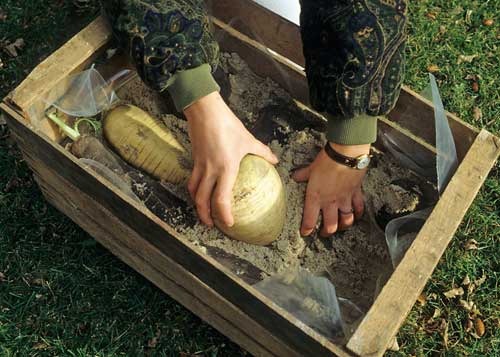
- In a plastic bag... If you do not have a wooden container, you can use the bag. Arrange the roots in a tight bag vertically, sprinkle with wet sand. There must be holes in the plastic bag. Packages with vegetables should be placed on the shelves in the cellar.
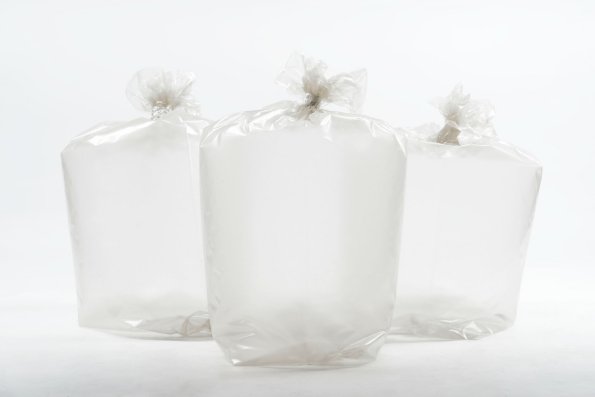
On the balcony
Not every summer resident and gardener has the opportunity to store radish in the basement or cellar. A glazed balcony or loggia comes to the rescue in this matter. But storage is possible only if the temperature on the balcony does not drop below zero. Also, the balcony must be closed and dry.
Place the root vegetables in a polyethylene bag with holes. In case of sudden cold weather, cover the vegetables well with a warm blanket.
If the dimensions allow, then you can store the radish in wooden boxes. As in the case of the basement, vegetables are stacked in rows, between which wet sand is poured.

In a refrigerator
The best option is storage in the refrigerator. For storage, you must leave the tops on the root crop at least three centimeters. It is recommended to place the root vegetables in a polyethylene bag with holes. In turn, the bag should be placed in a special compartment for vegetables. The maximum shelf life in the refrigerator is up to one month.
The disadvantage of this method of storing radish is the small size of the refrigerator - it will not be possible to place too many vegetables in it.
By the way! You can store both winter and summer radishes in the refrigerator.
General tips and tricks for storage
In addition to observing the optimal conditions and methods of storage, you need to know about some features:
- Regardless of the storage method and place, it is necessary to periodically check the roots. If traces of damage are found, then the vegetable should be removed. If the vegetable is rotten, then sprinkle the root vegetables with chalk.
- You cannot store the root crop next to apples and pears, otherwise these fruits will absorb the smell and their taste will deteriorate. Also, because of such a neighborhood, the reproduction of certain microorganisms is possible, which will reduce the keeping quality of the radish.
- Carrots and potatoes are excellent neighbors for root crops.
- An important component of successful storage will be the correct cultivation of the vegetable in the garden and timely care.
Video: how to harvest and store a radish crop.
This amazing food product can be baked, boiled, consumed raw, preparing a variety of salads with it. With its help, you can not only improve health, but also improve the emotional background, because tasty and healthy food raises your spirits. A real find for the hostess! So by creating the right storage conditions and completing all the necessary steps, you can regularly feast on healthy vegetables in winter and spring.
By the way! You can also look at information on how to properly harvest and store crops of other crops in these articles: Bell pepper, beet, cabbage, garlic, celery, horseradish root, zucchini, onion.

